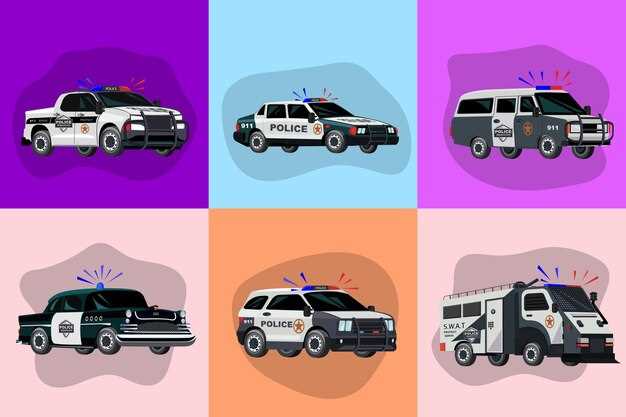
The automotive landscape is filled with diverse options for SUV enthusiasts, and two standout models from Ford are the Ford Edge and the Ford Bronco. While both vehicles cater to drivers seeking utility, comfort, and performance, they embody different philosophies in design and functionality. This analysis aims to provide a comprehensive comparison of these two popular SUVs, examining their key features, performance metrics, and target demographics.
The Ford Edge is known for its sleek, modern design and a focus on urban driving. This midsize SUV offers an array of tech-savvy features and a spacious interior, appealing to families and professionals alike. With its comfortable ride and advanced safety technologies, the Edge is designed for those who prioritize daily usability over rugged capability.
In contrast, the Ford Bronco is a nod to the brand’s off-road heritage. This iconic vehicle combines a robust build with advanced four-wheel drive systems, making it an ideal choice for adventure seekers. The Bronco is engineered to tackle challenging terrains while offering customizable features that cater to outdoor enthusiasts. Its nostalgic design and modern functionality resonate with a different segment of the SUV market.
In this comparison, we will delve into aspects such as design philosophies, performance capabilities, interior comforts, and overall value, providing a thorough understanding of how the Ford Edge and Ford Bronco stack up against each other. By the end, readers will gain insights that will assist them in making informed decisions based on their driving needs and lifestyle preferences.
Performance Metrics: Edge vs Bronco Powertrain Specs

The Ford Edge and Ford Bronco offer distinct powertrain options that cater to different driving experiences and preferences. The Edge primarily emphasizes a more urban and comfortable ride, while the Bronco is designed for off-road adventures and rugged terrain.
The Ford Edge features a 2.0-liter EcoBoost inline-four engine that delivers a robust 250 horsepower and 275 lb-ft of torque. This engine is paired with an eight-speed automatic transmission, providing smooth acceleration and efficiency, making it ideal for city and highway driving. Additionally, a more powerful 2.7-liter EcoBoost V6 engine is available, producing 335 horsepower and 380 lb-ft of torque, enhancing the Edge’s performance capabilities, especially during highway merging and overtaking.
On the other hand, the Ford Bronco showcases a more versatile powertrain lineup suited for adventurous driving. The base model is equipped with a 2.3-liter EcoBoost inline-four engine, generating 270 horsepower and 310 lb-ft of torque. This engine offers a balanced blend of power and efficiency, perfect for both on-road and off-road applications. For those seeking additional power, the Bronco also offers a 2.7-liter EcoBoost V6, capable of producing up to 310 horsepower and 400 lb-ft of torque, which significantly enhances its off-road capabilities.
Both vehicles feature an all-wheel-drive system, but the Bronco’s 4×4 capabilities are specifically designed to tackle challenging terrains, making use of advanced off-road technologies like G.O.A.T. (Goes Over Any Terrain) modes. The Edge, while equipped with intelligent all-wheel drive, is optimized for stability and control in diverse weather conditions rather than extreme off-road performance.
In summary, the performance metrics of the Ford Edge are aligned with a smooth and powerful on-road experience, while the Ford Bronco is built to excel in rugged environments, providing options for more demanding driving conditions. Customers should assess their driving needs to determine which powertrain best suits their lifestyle.
Interior Features and Comfort: Comparing Cabin Experience
When it comes to choosing between the Ford Edge and the Ford Bronco, cabin experience plays a crucial role in the decision-making process. Both SUVs offer distinct features tailored to different lifestyles and preferences.
The Ford Edge is designed for comfort and luxury. Its interior is spacious, with seating for five adults and an emphasis on a refined atmosphere. Key features include:
- Premium Materials: The Edge uses high-quality materials throughout the cabin, including leather-trimmed seats and soft-touch surfaces.
- Infotainment System: Equipped with Ford’s SYNC 4 technology, it offers a large touchscreen display, Apple CarPlay, Android Auto, and a premium audio system.
- Ambient Lighting: Adjustable interior lighting enhances the cabin’s ambiance, making it suitable for both daily commuting and long trips.
- Climate Control: Dual-zone automatic climate control ensures comfort for both the driver and passengers.
On the other hand, the Ford Bronco presents a more rugged utility-focused interior. It’s designed for adventure enthusiasts, offering durability and functionality. Key features include:
- Removable Doors and Roof: The Bronco’s design allows for customizable cabin experiences, enabling an open-air feeling for off-road adventures.
- Water-Resistant Materials: The interior includes water-resistant seat materials and rubberized flooring, making it easier to clean after outdoor activities.
- Integrated Storage Solutions: The Bronco provides multiple storage compartments and hooks for gear, catering to those who prioritize utility.
- Off-Road Technology: Features like a terrain management system enhance driving experience both on and off-road.
In summary, the Ford Edge excels in comfort and luxury, appealing to those seeking a stylish SUV with advanced technology. In contrast, the Ford Bronco shines with its rugged design and practical features, making it ideal for adventurers who crave versatility. Ultimately, the choice between the two will depend on individual preferences and lifestyle needs.
Off-Road Capability: Edge’s Limitations vs Bronco’s Strengths

When comparing the Ford Edge and Ford Bronco, the differences in off-road capabilities are striking. The Ford Edge is primarily designed for urban commuting and highway driving, boasting a smooth ride and efficient fuel consumption. However, its on-road focus comes with limitations in off-road scenarios. The Edge’s front-wheel-drive architecture and lower ground clearance hinder its ability to tackle rough terrains, steep inclines, and deep mud. The all-wheel-drive system, while helpful in inclement weather, does not provide the rugged off-road performance found in more specialized vehicles.
In contrast, the Ford Bronco stands out as a true off-road powerhouse. With a robust body-on-frame design, it offers superior ground clearance, approach and departure angles, and a range of off-road features. The Bronco includes selectable drive modes that enable it to adapt to various environments, from rocky trails to sandy dunes. Its advanced four-wheel-drive system provides enhanced traction and stability, essential for conquering challenging conditions. Moreover, the Bronco’s suspension system is designed to absorb shocks and improve handling on uneven surfaces, making it a preferred choice for adventurous drivers.
Ultimately, those seeking serious off-road capabilities will find the Bronco’s strengths far outshine the Edge’s limitations. While the Edge may excel in everyday driving situations, it simply cannot compete with the Bronco’s ruggedness and versatility when it comes to off-road adventures.



